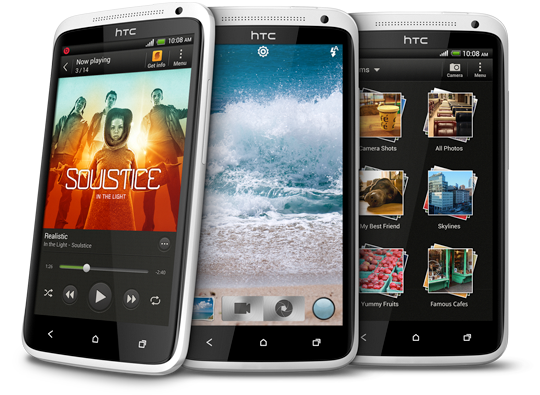After years of trying and failing to discourage manufacturers from adding user interface (UI) layers to Android, Google appeared destined for success with the visually refined Android 4.0 (“Ice Cream Sandwich”). Despite predictions that ICS would kill off the “skins” for good, however, HTC’s Sense and Samsung’s TouchWiz have not only arrived in new Android 4.0 versions, but they have met with positive reviews.
This week, these top two skins were joined by LG’s Optimus UI 3.0, yet another feature-rich interpretation of Android 4.0. Debuting soon on the new LG Optimus 4X HD and Optimus LTE II, the latest Optimus skin features great customization and the ability to take photos via voice command. Along with a growing list of third-party launchers and custom ROMs, vendor-supplied UI layers continue to both complicate and energize the Android standard.
Ranging from cosmetic modifications to more fundamental UI modifications and feature suites, UI layers offered some advantages in the early days of Android. Yet, as Android evolved, the skins have hindered more than helped, burdening users with sometimes cartoonish interfaces and awkward feature alternatives. More to the point, the UI layers often reduce performance and battery life, while cluttering the screen and wasting storage with “bloatware.” Skins have also been criticized for delaying products and OS updates, and making it harder for Android app developers to reach a broad audience.
Some vendors have retreated from the skin game. Notably Motorola began scaling back its MotoBlur interface in 2010, and the latest, MotoBlur-derived Motorola Application Platform hews close to stock Android. HTC and Samsung, however, have stubbornly pushed out major Android 4.0 updates of their Sense and TouchWiz skins, respectively.
Their persistence was recently explained in a Laptop story by Drew Bamford, HTC’s lead designer for Sense 4.0. HTC’s goal with Sense, he said, is to “create that continuity of experience and that bridge of an identifiable HTC experience across our products.”
Glowing reviews
Although some critics contend the new skins hide ICS’ best design improvements, most reviews have been quite positive. Even the techies on the Android forums have had nice things to say, and some have even suggested they may keep the layers instead of rooting and replacing them with custom ROMs.
 In the case of Sense 4.0, which debuted on the HTC One X, the praise focuses on the more refined interface. HTC has scaled back many of Sense’s previous excesses, removing features that ICS already excels at. Its subtle matte-finish interface is far less cluttered, and new customization features include personalized widget sets, customizable lockscreens, and optional overlays.
In the case of Sense 4.0, which debuted on the HTC One X, the praise focuses on the more refined interface. HTC has scaled back many of Sense’s previous excesses, removing features that ICS already excels at. Its subtle matte-finish interface is far less cluttered, and new customization features include personalized widget sets, customizable lockscreens, and optional overlays.
Despite Samsung’s addition of a nature-themed cosmetic overlay to the ICS-ready TouchWiz Nature UX, the UI layer is less dramatically altered from the previous TouchWiz 4.0 than Sense 4.0 is from Sense 3.5. Yet Samsung has loaded up TouchWiz with a bevy of innovative features, making it more of an application suite than a skin. Like Sense 4.0, Nature UX builds upon ICS enhancements with new lockscreens and improved camera controls, but it goes much further.
As demonstrated on the Samsung Galaxy S III, TouchWiz adds the somewhat Siri-like “S Voice” concierge service, as well as a picture-in-picture function. Various enhancements make use of sensors and cameras. For example, the “direct call” feature lets one switch from a messaging to a voice session by holding the phone to one’s face. “Smart stay” uses face recognition to send the phone into a blank power-saving mode when one’s glance is averted. And for the ultimate gee-whiz effect, tapping on a familiar face in a photo instantly pulls up the subject’s contact info. 
Uninstall isn’t an option
Clearly, Sense and TouchWiz have both been greatly improved. Yet, a chief criticism of both UI layers remains the same: neither are easily removed. There’s no uninstall function, and especially in the U.S., locked bootloaders dissuade users from modifying the vendors’ branded experiences.
This is no big deal for Android techies, most of whom will continue rooting their devices to replace the latest skins with custom ROMs. An increasing number of stock Android 4.0 firmware alternatives are available from CyanogenMod, XDA-Developers, and others, and some let users switch between modded versions of vendor skins in addition to stock ICS.
For most consumers, however, the risk of “bricking” one’s device into a coma makes rooting the phone with a new ROM an unwelcome option.
As Ryan Whitwam notes in a May 8 story in ExtremeTech, there are less risky ways to nudge a skinned phone toward Android purity. Installing an ICS-ready launcher like Apex and ADW adds home-screen customization options that approximate a stock Android experience. Whitwam also points to alternative browsers and other apps that can help restore a stock experience. These solutions, however, do not necessarily remove bloatware or address potential performance, storage, or battery problems.
Despite the drawbacks of fragmentation, vendors should be encouraged to make Android anything they want — even if they go as far as Amazon with its partial fork of Android 2.3 for its Kindle Fire tablet. And in the interest of providing users with an open platform, too, perhaps the next versions could offer the option to uninstall.




